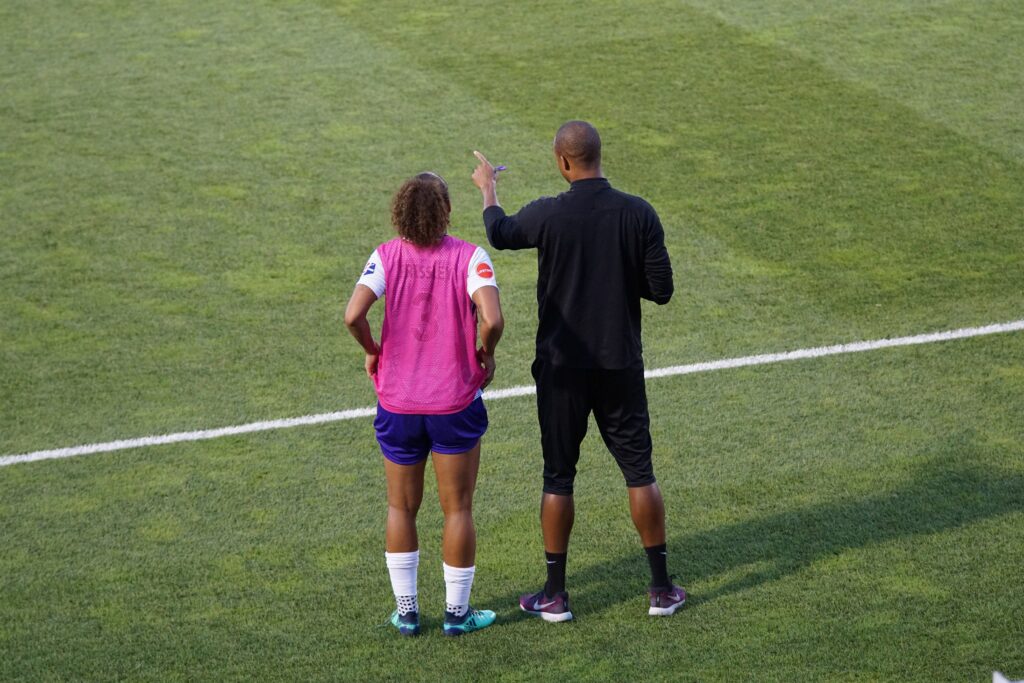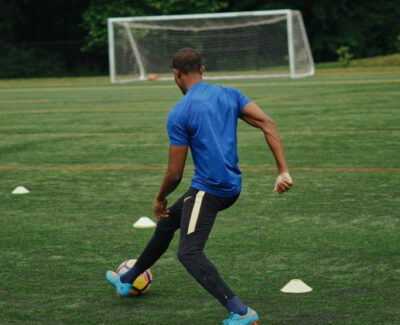Introduction
Maximising Player Potential may be a question you have thought of in the past and wondered about the best ways to achieve this.
As a good-level soccer coach with a fair amount of experience, you likely have a solid understanding of the game and the fundamentals of coaching.
However, to take your coaching to the next level, you need to focus on meeting the needs of your players to enable them to reach their potential.
By doing so, you can help your team achieve success and develop into well-rounded athletes.
In this article, we will explore some insights for more experienced soccer coaches to help them maximise their players’ potential.

Understanding Your Players As a Coach
it is important to recognise that each player has their own unique strengths, weaknesses, personalities, and motivations.
Understanding each player’s needs will help you tailor your coaching approach to get the best out of your players.
Conducting individual player evaluations is an excellent way to understand your players better. These evaluations should include assessments of their physical attributes, technical skills, and tactical knowledge.
You can also gather information about their personal goals and aspirations, their commitment to training, and their willingness to learn and improve.
By gathering this information, you can develop a personalised training plan for each player that focuses on their specific needs.
For example, if a player is struggling with ball control, you can create practices that focus on improving their receiving skill, ball control and first touch.
Or, if a player wants to improve their speed and agility, you can create a strength and conditioning program that focuses on those areas.

Setting Realistic Targets
Setting realistic targets is crucial for increasing player potential. Goals that are too easy will not motivate your players to improve, but, if they are too challenging they can be disheartening.
As a coach, it is your responsibility to set targets that are challenging but attainable.
When setting goals, make sure to use S.M.A.R.T.E.R targets
- Specific – Be precise and as detailed as possible.
- Measurable – Rate the current position and then determine the amount of improvement required.
- Accepted – Share and negotiate with all others involved.
- Realistic – Realistic yet challenging.
- Time-phased – The date is set for when the goal is to be achieved.
- Exciting – Motivates the individual.
- Recorded – Progresses towards it is recorded.
For example, if a player wants to improve their finishing accuracy, set a target with them of scoring 3 goals in the next six games.
This gives your players a clear target to work towards that is realistic and allows you to measure their progress, challenge, motivate and excite them to succeed.

Focusing on Individual Development
While team success is important, it is equally essential to focus on the individual development of each player.
By helping your players develop their skills and reach their full potential, you will not only improve their performance but also the overall performance of the team.
To focus on individual development, work closely with your players and create personalised training plans. These plans should be based on their strengths and weaknesses, as well as their goals and aspirations.
Provide individual feedback during training sessions and games, focusing on areas for improvement and providing specific suggestions for how to improve.
As you may only have a limited time to work with your players at training, encourage them to take ownership of their development.
Encourage them to practice on their own, watch professional games, and seek out additional training opportunities.

Creating a Positive Team Culture
A positive team culture is essential for maximising player potential. When players feel supported and motivated, they are more likely to perform at their best.
As a coach, it is your responsibility to create a positive team culture. Please read my article Relationship Building Through Soccer
To create a positive team culture, foster open communication. Encourage your players to share their thoughts and feelings, both on and off the field. Make sure your players feel heard and understood.
Additionally, provide positive reinforcement when your players perform well and offer constructive feedback when they make mistakes.
Create a sense of team unity by organising team-building activities and events. This could include team dinners, social outings, or community service projects.
When players feel connected to their teammates, they are more likely to work together and support each other on the field.
Utilising Technology
Technology has become an integral part of sports training, and soccer is no exception. As a soccer coach, it is essential to utilise technology to help increase your players’ potential.
One way to use technology is through video analysis. Recording games and practices allow you to review your players’ performances and provide specific feedback.
You can use video analysis software to break down individual plays and provide input on technical and tactical aspects of the game.
There are also a variety of resources, training apps and programs available that can help your players develop their skills.
These apps can be used to track progress, provide personalised training plans, and offer feedback on technical skills.
I currently use a drone in my own coaching when I can to give me an aerial perspective of my training sessions CLICK HERE FOR FURTHER DETAILS. Please read my article – Football and Drones – The Ultimate Guide and Is the DJI Mini 2 a bargain? read my results
Conclusion
Maximising player potential is a crucial aspect of soccer coaching, and it requires a combination of factors.
These include understanding your players, setting realistic goals, focusing on individual development, creating a positive team culture, and utilising technology.
While these factors are essential, it is also important to keep in mind that maximising player potential is not a one-size-fits-all approach.
Each player is unique, and what works for one player may not work for another. As a coach, it is your responsibility to tailor your approach to the specific needs of your players.
In addition to these factors, there are a few other things that you can do as a coach to maximise player potential.
For example, it is important to create a safe and inclusive environment where players feel comfortable expressing themselves and taking risks.
Encourage your players to try new things, make mistakes, and learn from them.
It is also important to provide opportunities for your players to showcase their skills. This could include participating in tournaments or attending trials for higher-level teams.
When players have the opportunity to play at a higher level, they are more likely to push themselves to improve.
Finally, it is important to lead by example as a coach. Set a positive example for your players by exhibiting the behaviour and attitude you expect from them.
Show up to training and games well-prepared and enthusiastic, and always be willing to learn and improve.
By following the above-mentioned factors, you can help your players reach their full potential.
Remember that each player is unique, and it is your responsibility as a coach to tailor your approach to the specific needs of your players.
With the right coaching, support, and motivation, your players can achieve great things on and off the field.
If you enjoyed this article and have any questions or comments or just wish to share your thoughts.
Please leave them in the comments box and I will respond once I get the chance.




Thank you Chris for such an intriguing article on How To Maximise Player Potential for soccer coaches. There is a dearth of this kind of valuable material on the subject available on the internet so I know this will be extremely helpful to many folks out there trying to turn themselves into good coaches but may simply be lacking the background to have any real success try to draw from their own experiences.
Setting reasonable goals rings true as does investing individually into each player at their own level. You have to meet the player where there at, not expect them to rise to you level. I do wonder though if each player is really unique, how does a coach find the time to instruct each individually?
Thank you Joseph for your comments. It’s always good to know that I’m not talking gibberish and that it is in fact interesting information.
As a coach, you have to consider that every player needs something different as coaching cannot be one size fits all at least the individual elements of the game.
Working with individuals is about putting plans in place with the player so that they can work on the areas they need to improve in training, matches and also on their own. For example, in training, they could play on fewer touches or practice finishing with their weak foot. Not everything has to be in isolation and 1 to 1 the players have to take some ownership of their development.